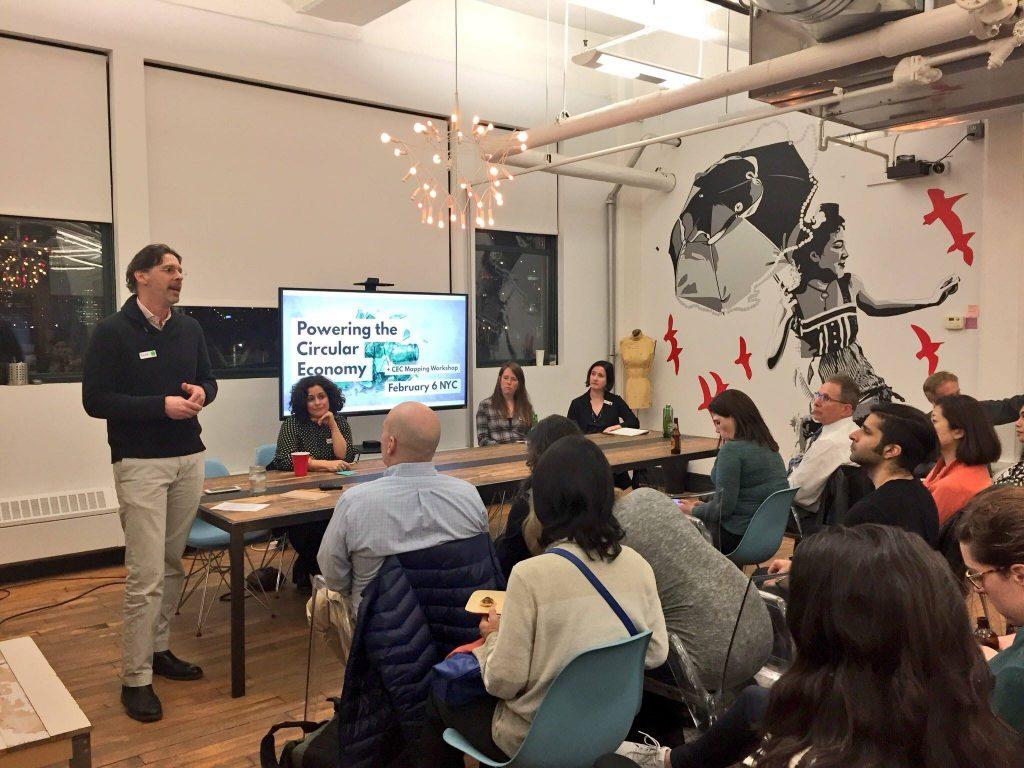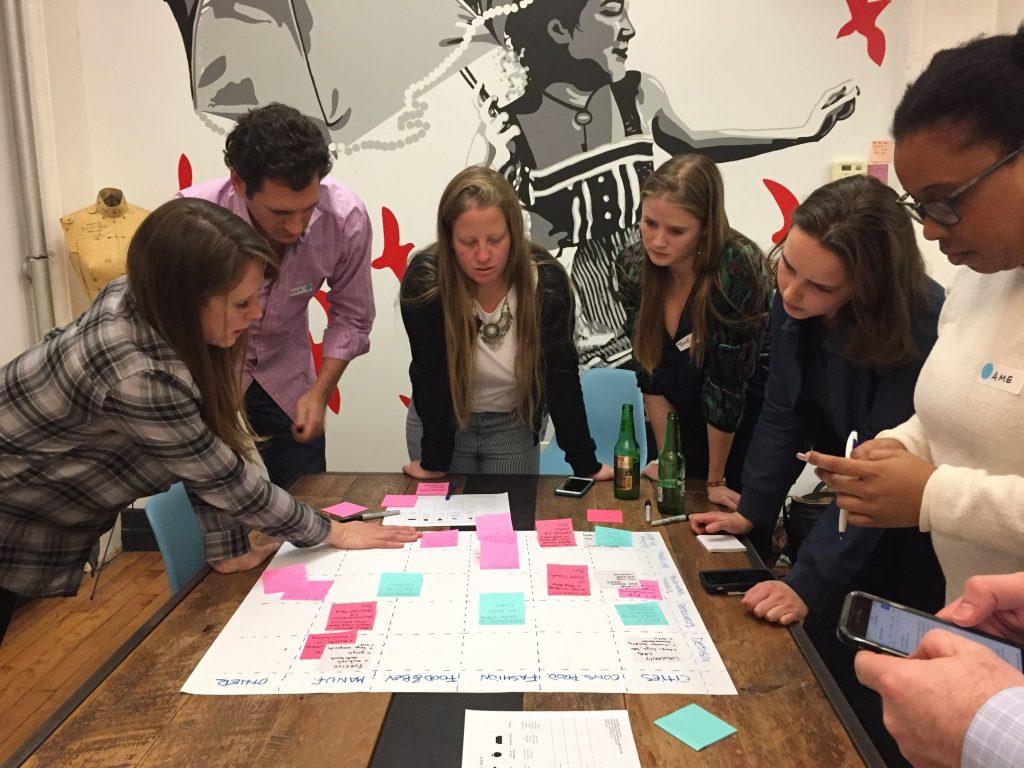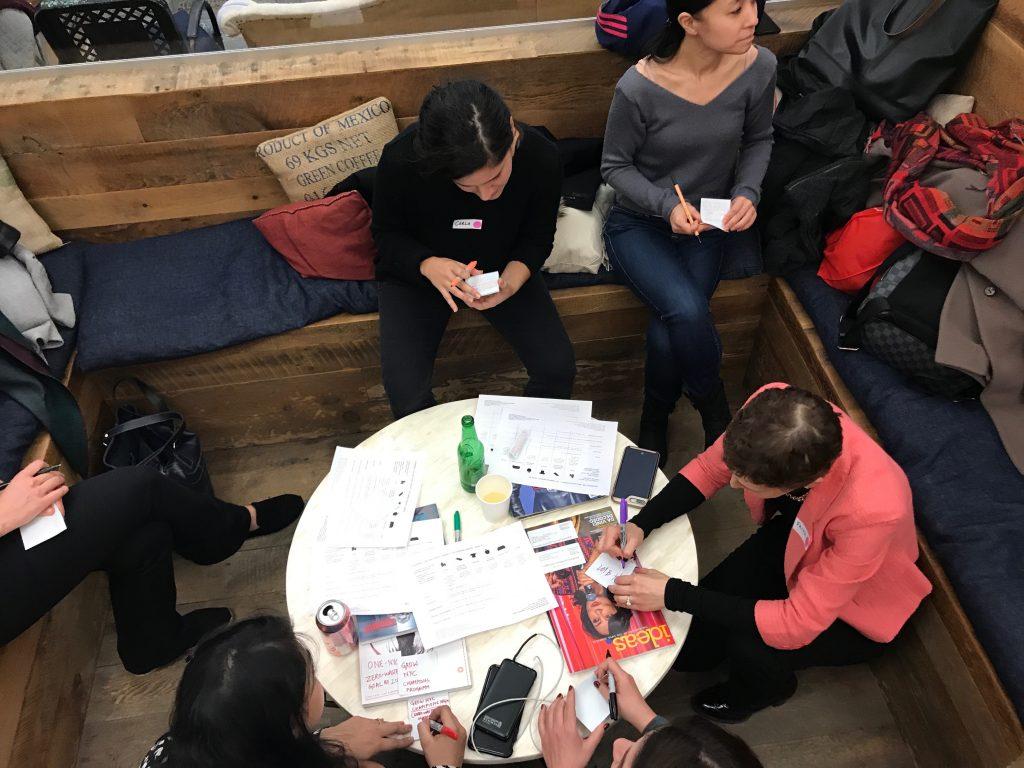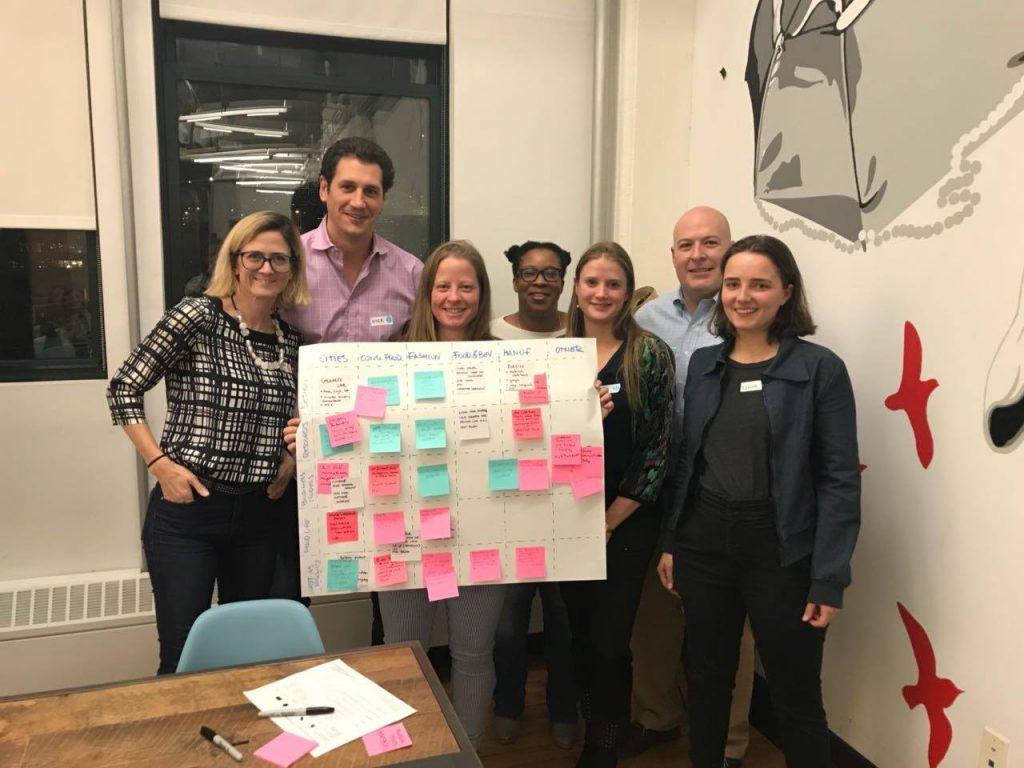Powering the Circular Economy
by Liz Courtney
“Circular design gives us the opportunity to rethink the whole paradigm instead of operating under current restraints.”
This is the potential for circular design, says Stephanie Johnston, Director of Sustainable Business at Heineken USA, speaking to a room of circular economy enthusiasts, experts and those curious to learn more about how closed-loop design is moving us toward a world without waste. On February 6, BBMG hosted the gathering, “Powering the Circular Economy,” as part of Circular Economy Mapping Week, a global event in partnership with the Circular Economy Club that had similar convenings happening in 67 cities, from Rio de Janeiro to Copenhagen to Aruba.
Designing for a world of abundance without waste is at the very heart of BBMG’s brand philosophy and our work with forward-thinking clients across the food, retail, fashion and beauty industries. So we were delighted to join forces with our friend Agustina Besada of the Circular Economy Lab to co-host the NYC workshop and collectively map local circular economy success stories to help fuel innovation via the global CEC network.
To kick off the evening we facilitated a conversation with the pioneering sustainability experts Jennifer Gootman, VP Social Consciousness + Innovation at West Elm, Kate Daly, Executive Director of the Center for the Circular Economy at Closed Loop Partners and Stephanie Johnston from Heineken about the challenges and opportunities of the circular economy with real-world examples from their experience.
BBMG co-founder Raphael Bemporad set context for the discussion by highlighting circular design opportunities across business models and product innovation as well as brand value and consumer behavior change, quoting Bill McDonough’s imperative to “design for all children of all species for all time.” From theoretical principles to emerging practices, here’s what we learned.
Bring the System into the Room
Real systemic change requires thinking big and finding mutually beneficial outcomes. Johnston spoke about how Heineken’s move towards circular practices in packaging has required coordination across differing state-level packaging and recycling policies and standards, but the effort will create long-term, shared, sustainable value and create genuine economic opportunities for Heineken’s business and stakeholders. Daly shared an example of how local manufacturers are using new technologies to repurpose textile waste. “There’s a duality of value that any investor will be committed to,” Daly said, underscoring how circular design creates wins for the environment and the company’s bottom line.
Build on the Momentum of Others
It can be difficult to be a pioneer. Both Gootman and Johnston are leading corporate sustainability initiatives using circular design thinking, setting the bar for others in their industry to follow. “One of the biggest challenges is when a new movement has so much potential, yet you have to overcome perceptions that it’s just a glorified recycling solution,” said Johnston. “Real energy comes from ‘everyone else is doing this now,’” she added, speaking to the importance of sharing success stories to demonstrate momentum already happening among peers and competitors to motivate buy-in. “Momentum is a motivator with the circular economy. You need multiple stakeholders coming together for a tipping point to happen.”
Scale the Movement
We also learned that for anyone concerned with advancing the circular economy, whether you’re a brand leader, involved in public policy, or just a concerned citizen, you can be part of the solution. Mass participation and collaboration with others across sectors become key to sharing knowledge and building the movement. And sometimes that requires bravery to challenge the status quo. “You need to talk where you are unwelcome so you can continue to build the connections – be a big mouth!” said Daly whose work at Closed Loop Partners funds research and development of technologies and business models focused on building the circular economy. In closing, Johnston said, “Always challenge the norm! Everyone has a role to play. The circular economy is hugely democratizing.”
***
Following the panel, we broke into teams to collectively map real-world examples of the circular economy in action in our community. We organized the examples across categories like Cities, Food, Fashion, and Manufacturing and within models like “Product Life Extension” and “Waste as a Resource.” The circular design concepts are being added to a global database that already has stories about upcycled commercial flooring in Cardiff, UK, furniture as a service in Brussels and a collaboration between Ford and Heinz to repurpose tomato waste into car parts.
Some of our favorite local ideas and innovations included: Modern Meadow’s lab-grown vegan leather, BK ROT, a community supported year-round composting service and the rooftop farming and sustainability company Brooklyn Grange.
To learn more, visit Circular Economy Club online.





